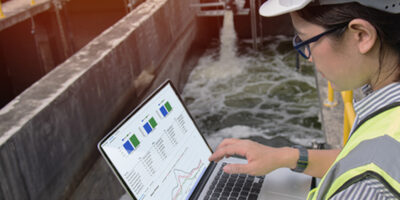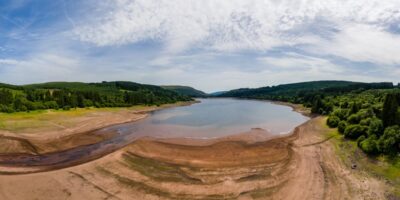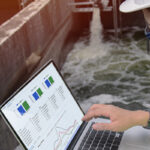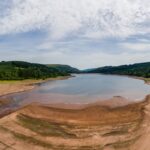Global warming, rising sea levels and rapidly growing cities are placing immense pressure on coastal cities, towns and subsistence communities. The U.S. Population Reference Bureau estimates that almost 6 billion people will be living within 200 kilometres of a coastline by 2025 – close to double the number in 2003. Population growth – along with sea level rise compounded by storm surges and increased rainfall intensity due to climate change – are the key reasons for the increase in coastal flooding and the degradation of our coastal regions and ecosystems today.
Another effect of climate change that may affect the risk of coastal flooding even more is the change of frequency and characteristics of storms, in particular the directions and intensity. Coastal defences have been designed based on the climate in the past and many of these designs will become obsolete in the climate of the future. As global temperatures increase, sea levels have risen at an accelerating rate. According to the Intergovernmental Panel on Climate Change (IPCC), a 2°C increase in temperature will cause sea levels to rise between 0.3 metres and 0.93 metres by 2100. Other independent research even suggest that this rise could be as much as two metres even with warming below 2°C.
What’s worrying is that global sea levels will continue to rise through the 21st century and beyond, owing to increased oceanic warming and loss of glaciers and ice sheets.
It’s a ripple effect
All the above are contributing to increased flood events especially along coastal regions. The destruction of homes, businesses, infrastructure and food-producing areas due to coastal flooding are major causes for concern worldwide. Apart from these effects, flooding also leads to health risks, such as communicable diseases outbreaks and drowning mortality.
The compounded negative effects of coastal flooding are why coastal regions have been challenged more than ever in recent years to mitigate, adapt and prepare for changed flood risks – now and in the future.
Using modern technology to managing coastal flooding
Advanced forecast of extreme weather events has provided support to many marine and coastal activities from coastal flooding to planning. However, understanding flood risk in itself is just the beginning. The best coastal flooding tools not only provide flood risk evaluation, but also help us develop real and economic solutions using our latest knowledge.
Technologies that have proven to benefit flood risk management are those that enable data analysis, design, forecasting and real-time control – all tailored to the needs of the local community.
5 tips for managing coastal flooding – with proven results
1. Use a mix of adaptation measures to reduce coastal impacts
Coastal cities faced with the risk of damage from rising sea levels, increasing storm surge, waves and rain intensity can adapt either by undertaking measures to keep water out or learning to live with more frequent floods. According to the World Economic Forum’s Global Risks Report 2019, there are three main strategies to manage coastal flooding:
- Using ‘hard’ engineering structures to keep water out of cities. These structures include eg. sea walls, dikes, storm-surge barriers, water pumps and overflow chambers
- Involving nature-based defenses such as conserving or restoring mangroves and salt marshes, or trying to shape how floods will affect cities, rather than always looking for flood prevention measures
- Relocating people and businesses to safer ground, or investing in social capital to make flood-risk communities more resilient
Adopting a mix of these strategies in your flood risk planning can help to reduce the magnitude of coastal flood impacts considerably.
2. Plan ahead using available data resources
Consider tapping into data portals to access reliable historical, current and future climate data to better plan your flood management strategies. Various online data portals and bases which provide diverse and useful information are available in the market today – bathymetry portals and metocean data portals are but a couple of examples.
3. Visualise present situations with online screening tools
User-friendly online screening platforms are extremely useful in helping you test various climate change adaptation strategies. With the right tools – such as a flood screening tool – you can quickly identify potential flood locations locally. Web-based decision support systems contribute greatly to successful flood risk planning. If you have access to repositories for climate information that display current and future climate change scenarios, along with analysis tools that make comparisons of do-something and do-nothing situations, decision-making will be an easier process for you and the various stakeholders.
4. Design your solution – it’s not one-size-fits all
There is no ‘best’ solution in the market, but there surely is a solution best for you. Talk to consultants and companies who are leaders in coastal water environments, who have handled successful coastal flooding adaptation projects all over the world. They have the expertise to suggest a combination of trusted software applications to analyse, model and simulate flood risks – all tailored according to your local profile and strategy. The best software solutions are those that are modular – so you can pick and choose the applications best suited to meet your intended outcome.
5. Protect your community through warning systems – and adapt to the changing climate
Use the information gathered from your models to build systems that warn your community of impending flood events. To adapt to the changing climate, it is important to have a real-time flood forecasting, warning and operational control system in place. Real-time operational control systems offer even greater flood protection by connecting to control pumps, weirs, gates and dams in the physical system for powerful, on-demand flood protection.
Improving the long-term sustainability of coastal communities
Spending on disaster recovery is almost nine times higher than on prevention. Future proof your investments with a holistic solution that enables not only data analysis but design, forecasting and real-time control.








